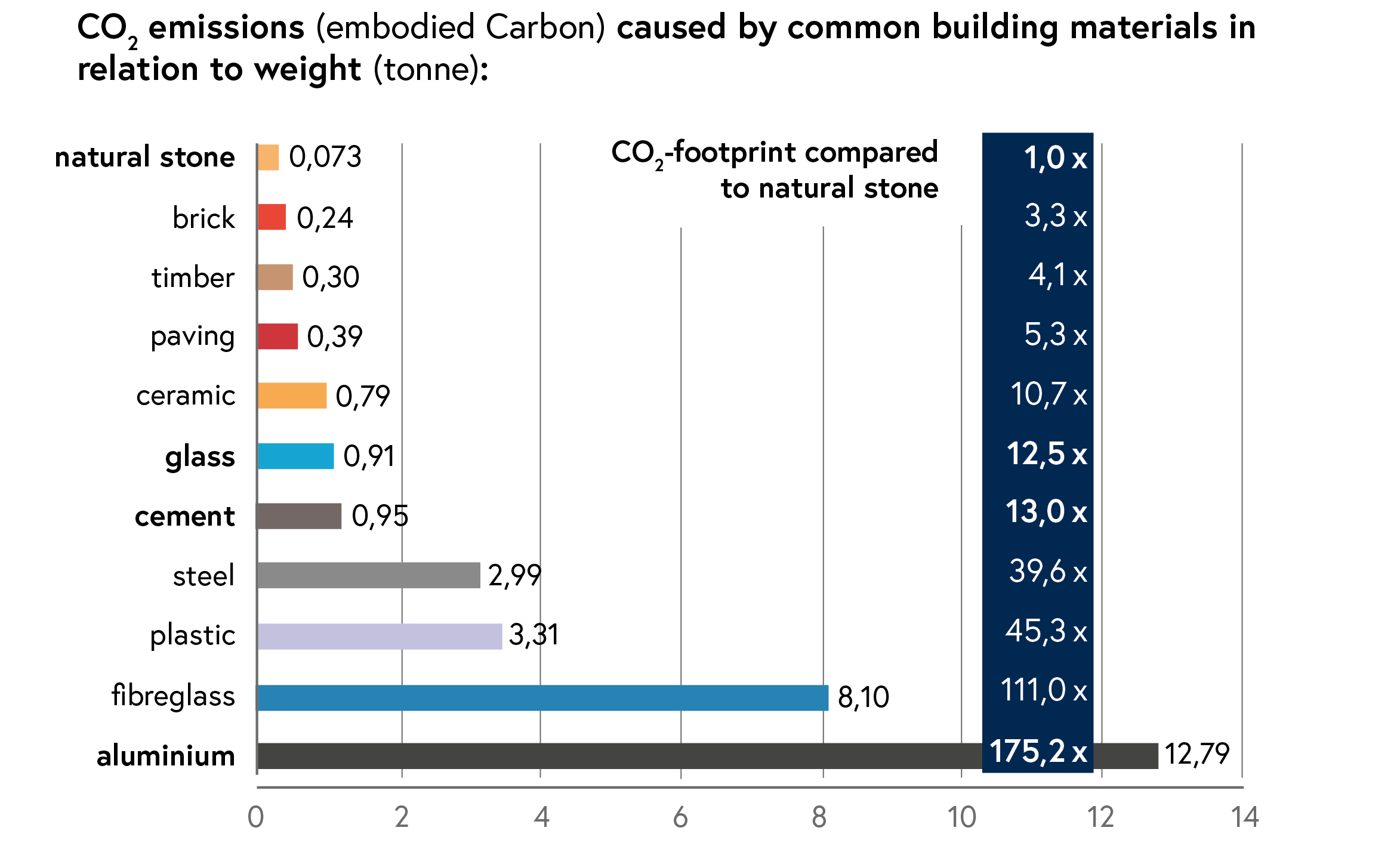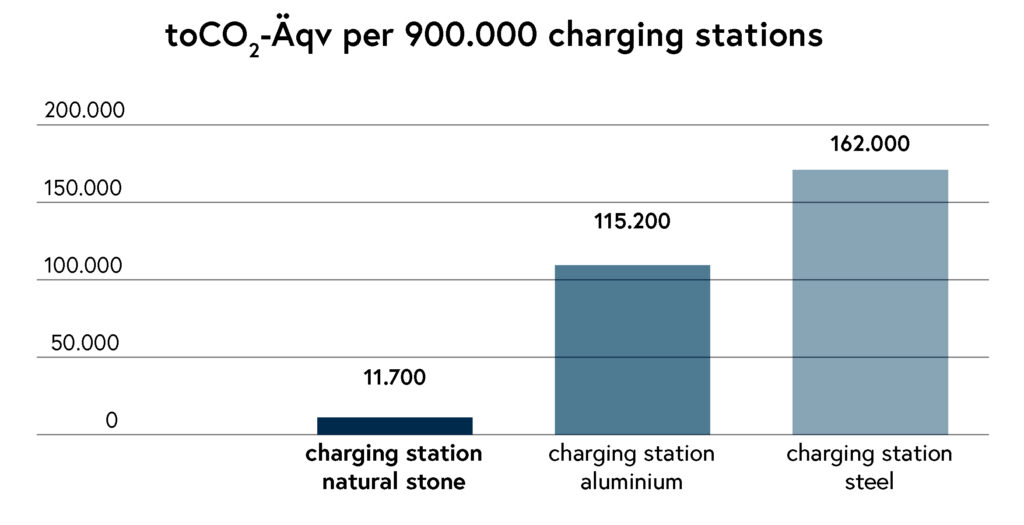SUSTAINABILITY
EXCELLENT ECOLOGICAL BALANCE OF NATURAL STONE
The consumption of primary energy in the extraction and further processing of natural stone is much lower than with many other building materials and materials, as the natural stone only has to be sawn "into shape". Its excellent energy balance is further enhanced by its long service life and recyclability. And if it does have to be recycled at the end of its service life, the natural stone can be reused as an aggregate for other industries or also in road construction, since it can be separated by type and does not contain any pollutants. For more information, see also Natural stone.
If we now compare natural stone with other building materials/materials, the study published at “zukunft.naturstein” comes to the following conclusion:

The German Natural Stone Association (Deutscher Naturwerkstein-Verband e.V.) is currently preparing an Environmental Product Declaration (EPD) for natural stone produced in Germany, which confirms the dimension of the study published by “zukunft.naturstein”.
eMiliarium – THE BETTER CAR CHARGING STATION
If one now compares the CO2 equivalent of charging stations made of natural stone with that of charging stations made of other materials, the terms "heaviness" and "lightness" take on a completely new meaning.
Charging station Natural Stone (Family 3, Type A):
Calculation weight:
1.650 mm x 200 mm x 200 mm x 2.630 kg/m³ = 174 kg
The CO2-emissions for the production of a granite charging station are therefore:
0,174 to x 73 kgCO2-Äqv. = 13 kgCO2-Äqv per Granite Charging station
Charging stations available on the market are made of aluminium or steel, which is why the following figures can be assumed:
Charging station Aluminium – Weight ca. 10kg:
0,010to x 1.279 kgCO2-Äqv. = 128 kgCO2-Äqv per Aluminium charging station
Charging station Steel – Weight ca. 60kg:
0,060to x 2.990 kgCO2-Äqv. = 180 kgCO2-Äqv per Steel charging station
The supposedly "heavy" building material granite, of all things, is characterised by the remarkable lightness of its ecological footprint. In contrast, the "light" building materials aluminium and steel turn out to be real heavyweights from an ecological point of view.
Approximately 900,000 charging stations will still be needed by 2030. This would have the following effect on the charging stations compared:

The savings potential with the use of granite charging stations thus amounts to over 150.000 toCO2-Äqv.

